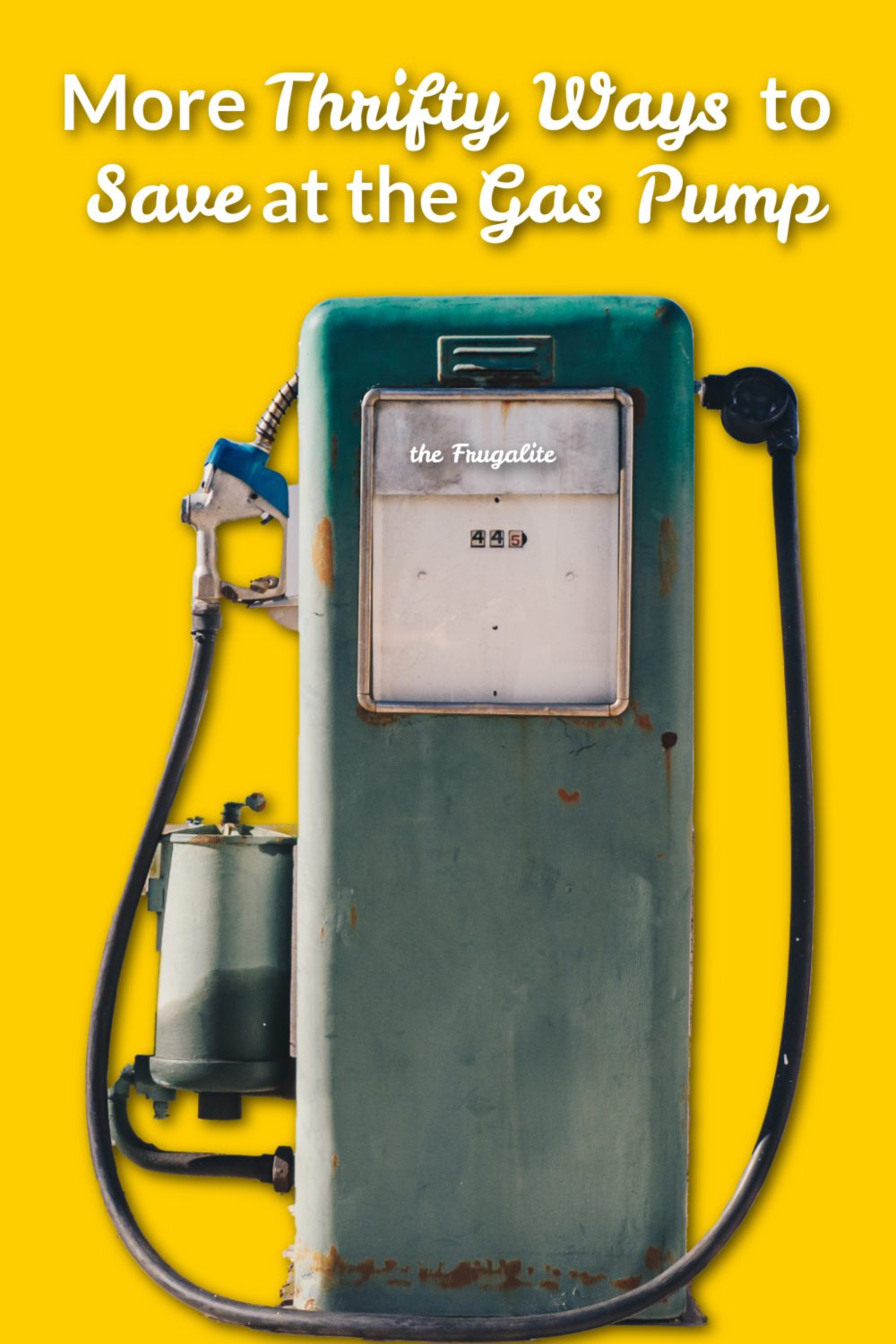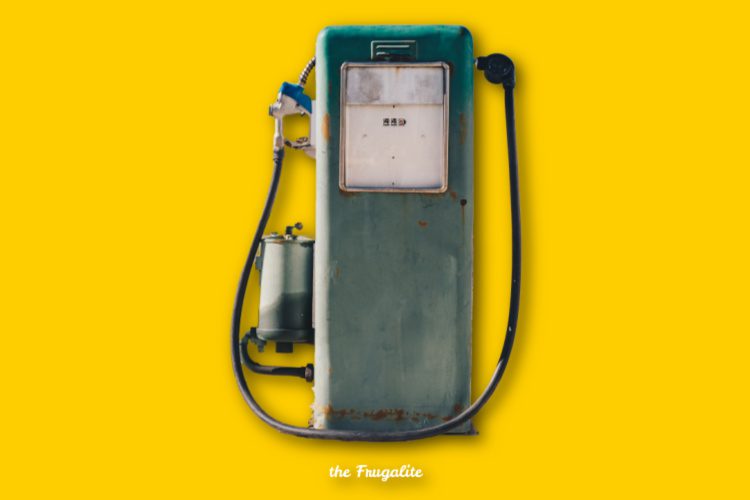(Psst: The FTC wants me to remind you that this website contains affiliate links. That means if you make a purchase from a link you click on, I might receive a small commission. This does not increase the price you’ll pay for that item nor does it decrease the awesomeness of the item. ~ Daisy)
With high gas prices seemingly here to stay, Frugalites, here are some tips to help you save money on gas at your local filling station. A previous article discussed gas savings from using gas additives. This article will discuss other ways to save on gas. While you may be doing some of these already, I hope you will find some new tips to lengthen your trips to the pump.
Check your owner’s manual to save money on gas
Just like preventative medicine for humans, preventative maintenance for your vehicle can keep it running great and prevent problems.
Check your owner’s manual for recommended maintenance at certain intervals or when you reach certain mileage thresholds. While you may not want to put your hard-earned cash into this if money is tight, it can actually save you money in the long run. Here, having a good mechanic you trust can help you sort out what is optional and what is required.
Use the lowest viscosity oil
Make sure you are running the lowest viscosity oil that your manual recommends. For example, if your manual recommends 10W-30 and you are running 5W-30, you may be able to reduce your fuel consumption by 1-2 percent just by switching to the less viscous oil. Do not assume your mechanic knows the best oil for you if you have an older vehicle or one that is unusual. My 20 year old Nissan Sentra, Rosie, took such an unusual viscosity of oil that I used to buy it myself for my oil changes to make sure she got what she needed.
Change the air filter when needed
Another item to check in your owner’s manual is how often to change the air filter. Your car’s engine needs oxygen for combustion. A clogged air filter hampers this. Air filters are not generally expensive. I changed mine in Rosie for the first time without any help.
Keep tires properly inflated
Want to save up to 8 cents per gallon at the gas pump? Check the pressure in your tires. Do this regularly, as changes in temperature affect the pressure in your tires. Make this easy on yourself. Do you have a tire pressure gauge in your glove box? What about a 12V powered air compressor so that you can quickly fill a tire that’s a bit low. Tire pressure matters: a dip of around 7.5 pounds will cost you around 2.8 percent of your mileage. It all adds up!
Pay attention to your car’s alignment
On a safe and straight stretch of road, check your alignment. Look down briefly at the steering wheel while you are going straight. Is it exactly centered? Do you feel your car pulling to one side or the other? Driving on road with potholes, for example, can easily play havoc with your alignment. We all make mistakes, too. Did you hit or drive over a curb lately? Have you noticed a change in the alignment? If you car is not well aligned, it is working too hard. You can be losing up to 10 percent of your mileage, possible 28 cents per gallon. Ouch!
Be a smooth operator to save money on gas
The cars of today have been designed to drive best at 50 mph. If you are able to use your cruise control or good driving skills to drive steadily at this speed, you can save yourself up to six percent of your fuel usage. Similarly, “rapid acceleration and braking can rob as much as 40% of your vehicle’s gas mileage.” While traffic conditions are often out of your control, you do your best with what you have.
Check that gas cap
An estimated 17 percent of cars have a missing or broken gas cap. You can’t burn your gas in your car if it’s evaporating into the air! Gas caps are a less expensive fix….and the savings could be up to 2 cents per gallon.
Get your junk out of that trunk
OK, guilty as charged. I drive a small car and it’s often filled with stuff for the homestead…bags of manure and such. However, if you happen to have some extra stuff in your trunk that you’re not using…just get it out of there and you’ll save gas for certain.
Winter tires on only when needed
Living in an area with a pretty extreme winter, I change to winter tires as soon as the temperature dips below 7 degrees Celsius (45 degrees Fahrenheit). Because snow tires are made with a softer rubber making contact with the road, you don’t want to be driving with them in warmer temperatures. This will only force your car to work harder, as the winter tires are not designed to grip dry warm roads. So, using your winter tires only when you need them is going to save you gas money.
Consider updating your old gem to save money on gas
I do not want to appear disloyal to my old gem of a car, Rosie. However, I feel I must share this new information about my new car, Lucky.
Rosie (2001 Nissan Sentra) and Lucky (2011 Toyota Corolla) have the same size gas tank of 50 L (around 11 gallons). On one tank of gas, Rosie could go 440 kilometers (275 miles) using a gas additive and Lucky can go a whopping 650 kilometers (over 400 miles) without any gas additive. The same amount of gas! I find that incredible. I can only assume, as they are the same class of car, that Lucky’s improved gas mileage is due to improved technology in the ten years after Rosie was built.
So, having bought Lucky for a very reasonable price, I am now getting basically an extra 50% out of every tank of gas. Especially now with gas prices so high, I am saving big. This has been a big help.
Fuel for thought to save money on gas
Higher gas prices are adding to everyone’s monthly expenses. Could you see yourself trying any of these tips to save at the gas pump? Do you have another one you can share with us? Please tell us in the comments below.












6 thoughts on “8 Thrifty Ways to Save Money on Gas”
Vehicles should not be used as a spare room of your house. A good mechanic is worth his/her weight in gold for maintenance/repairs one cannot do his/herself. Regardless of where you live, battery and coolant should also be checked/replaced. Yes, some items such as cabin filter (which are NOT always easy to get to/replace) likely won’t affect your mileage, may affect your health.
Totally agree about checking/replacing air filters – those of us out in the country can encounter generic dust plus harvest dust (soybeans anyone?).
And don’t forget general safety – wiper blades are inexpensive. Brakes are a definitive requirement. Properly inflated tires are a must but tires with adequate tread are imperative.
Regardless of gender, one should know enough about vehicles to avoid being ripped off. We’ve always changed the oil every 5K miles as we do not do a lot of city driving. Rotate tires on recommended bases. The conditions of the roads on which you drive every day do affect your mileage as Colette states and your car in general. Driving a few miles a day on better roads might save you money in the long run.
Hi Selena, This is fantastic. Your thoughts have covered so many important aspects of car maintenance and many things to watch out for. My car is always caked in mud from the drive to the barn from the road….and I’m sure a lot of soybean dust under it from all local roads I routinely drive. Thanks for taking the time to reflect on and share your own practices to keep your car in tip top condition and therefore to keep yourself safe!
Slow down. Accelerate slower, coast more and leave more room in between you and the car in front of you. Brake earlier and coast to a stop at traffic lights. Frequently, the light will turn, avoiding the need to accelerate from a dead stop, saving gas.
Added benefits, less wear on brakes and driveline, and it is safer.
Hi Mark, This is a great addition to the “smooth operator” idea. I especially like the coast to a stop towards the traffic lights. As someone who drives a standard vehicle, this can be achieved through a combination of coasting and down shifting. Many thanks!
In the spirit of “thinking outside the box”, or rather “thinking outside the vehicle”
Not all ways of saving on gas need to come from your driving skills or your handy mechanic. In the last two years of politically selective lockdowns and companies forcing some employees to work from home, many of those employees have realized they’d rather work from home whether for an employer or for themselves. For people for whom that’s possible, the gas savings from cutting out the daily commutes has to be substantial.
There’s another side to this. Right now the costs, range limits, and safety issues of electric vehicles are out of reason for most people with ordinary economics. But there are stories of battery technology development that in a few years should bring the cost of most electric vehicles way down, greatly extend the range possible between charges, and fix the existing safety hazards. If those efforts turn into developed reality, petroleum powered vehicles may become the minority … in some ways paralleling the history of the alcohol powered option on Ford Model-T vehicles vanishing once Prohibition left Rockefeller-owned gasoline station networks as the dominant legal vehicular power in the marketplace.
–Lewis
Hi Lewis, I had a chuckle at your skill at “thinking outside the vehicle”! Your insights on the impact of the pandemic on driving habits were spot on. In my region, some insurance companies are now even offering “insurance as you go” to reduce fees for people who are suddenly driving very little. Myself, I would love to see more carpooling and creative car sharing collectives pop up. I was not aware of the history: that there was an alcohol powered option on the Ford Model-T. What a shame this disappeared/was suppressed! In our local building code, it is now required to install an electric vehicle charging port in all new garage construction, regardless of whether the owner actually has an electric car or not. I would love to own one myself, but I will be waiting for the battery technology developments that you described. Great comments, as always! Thanks so much, Lewis!